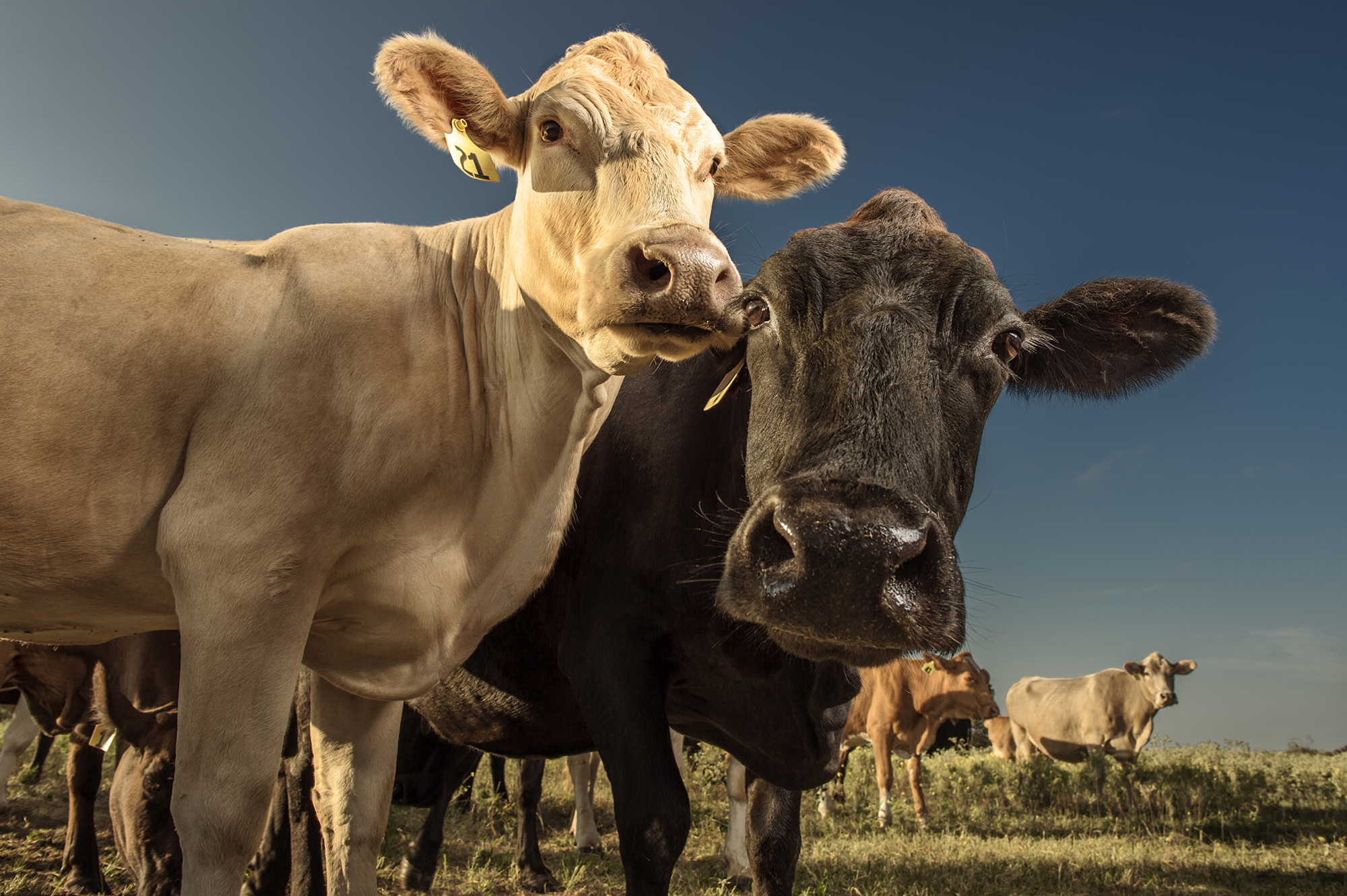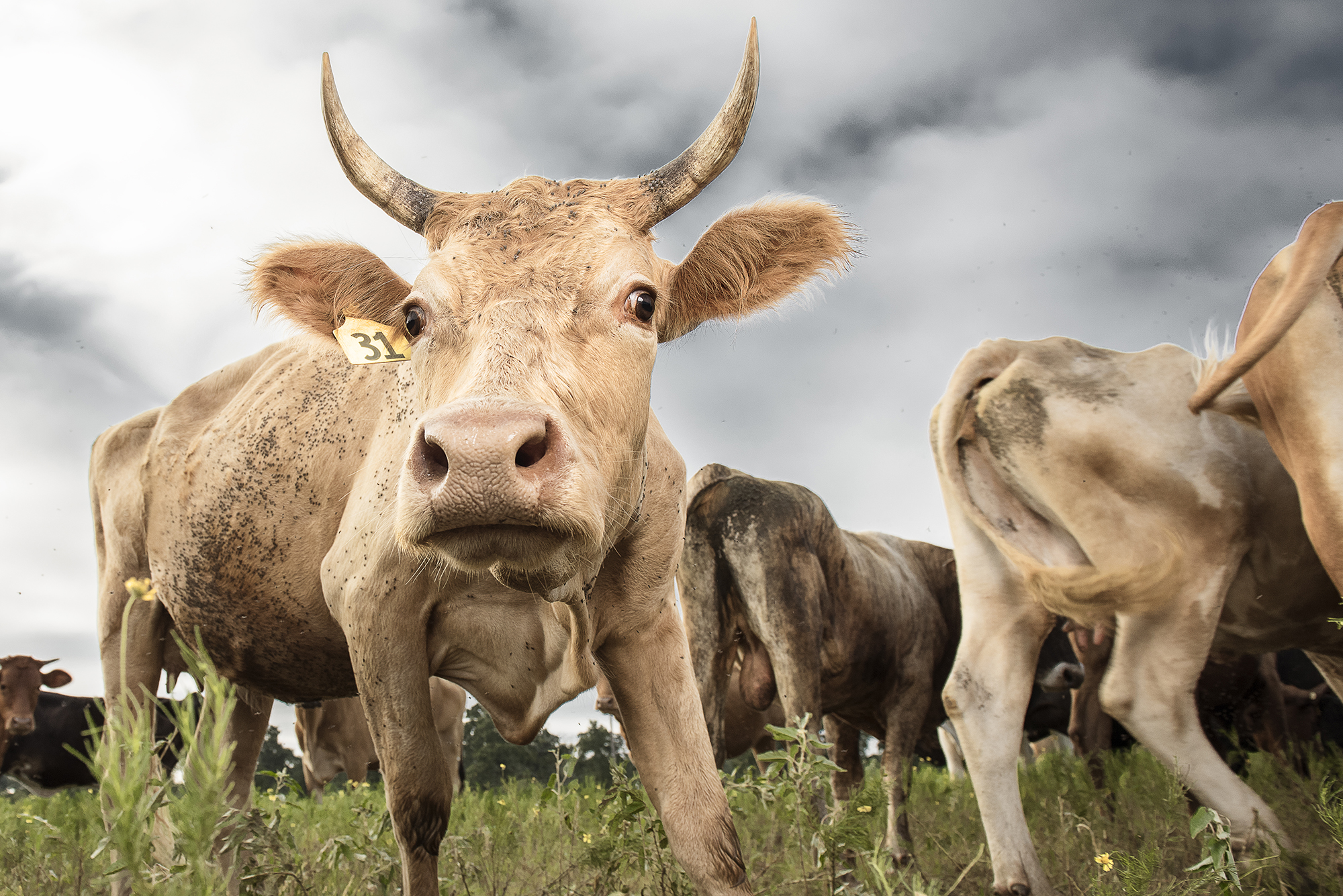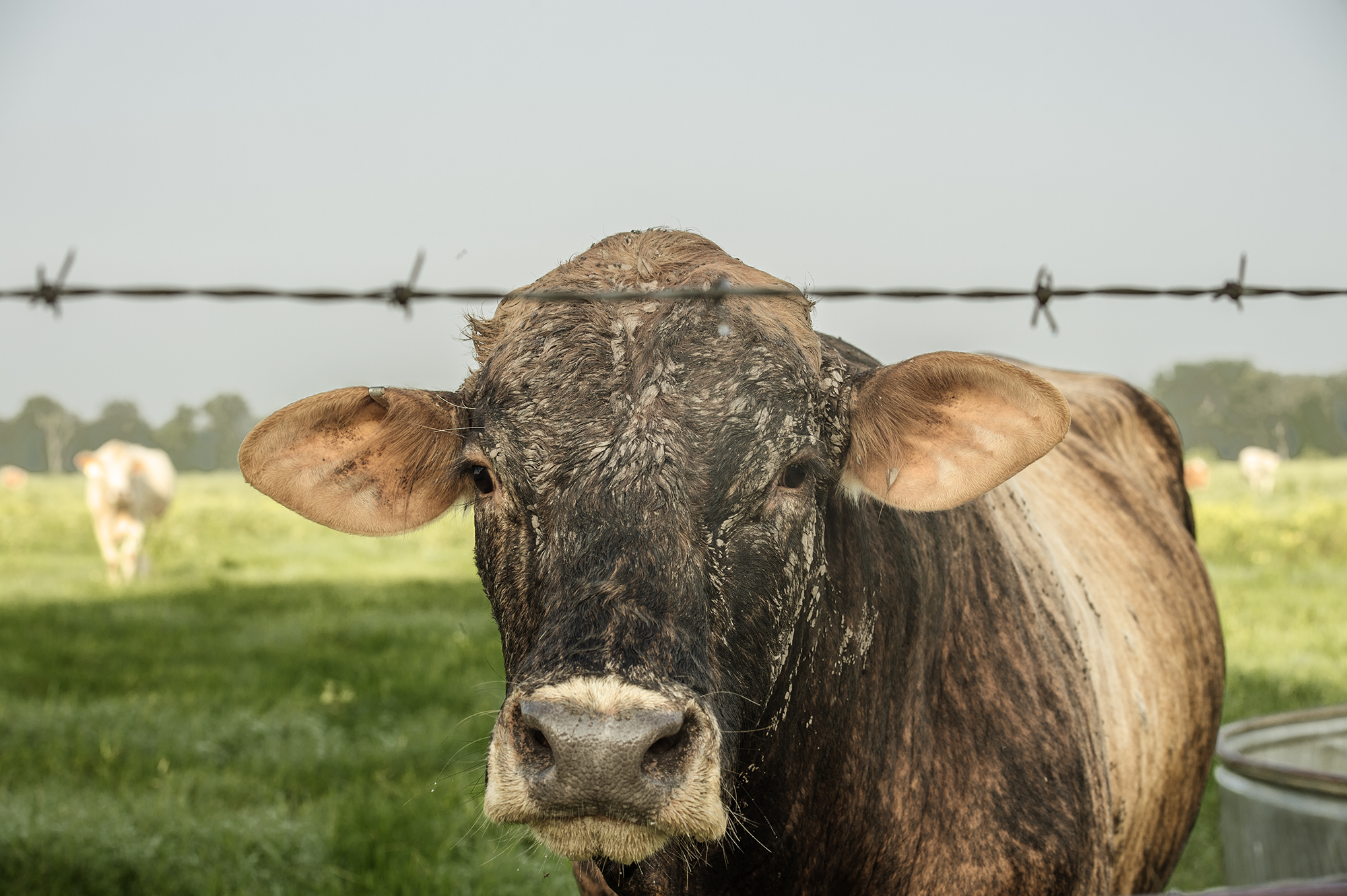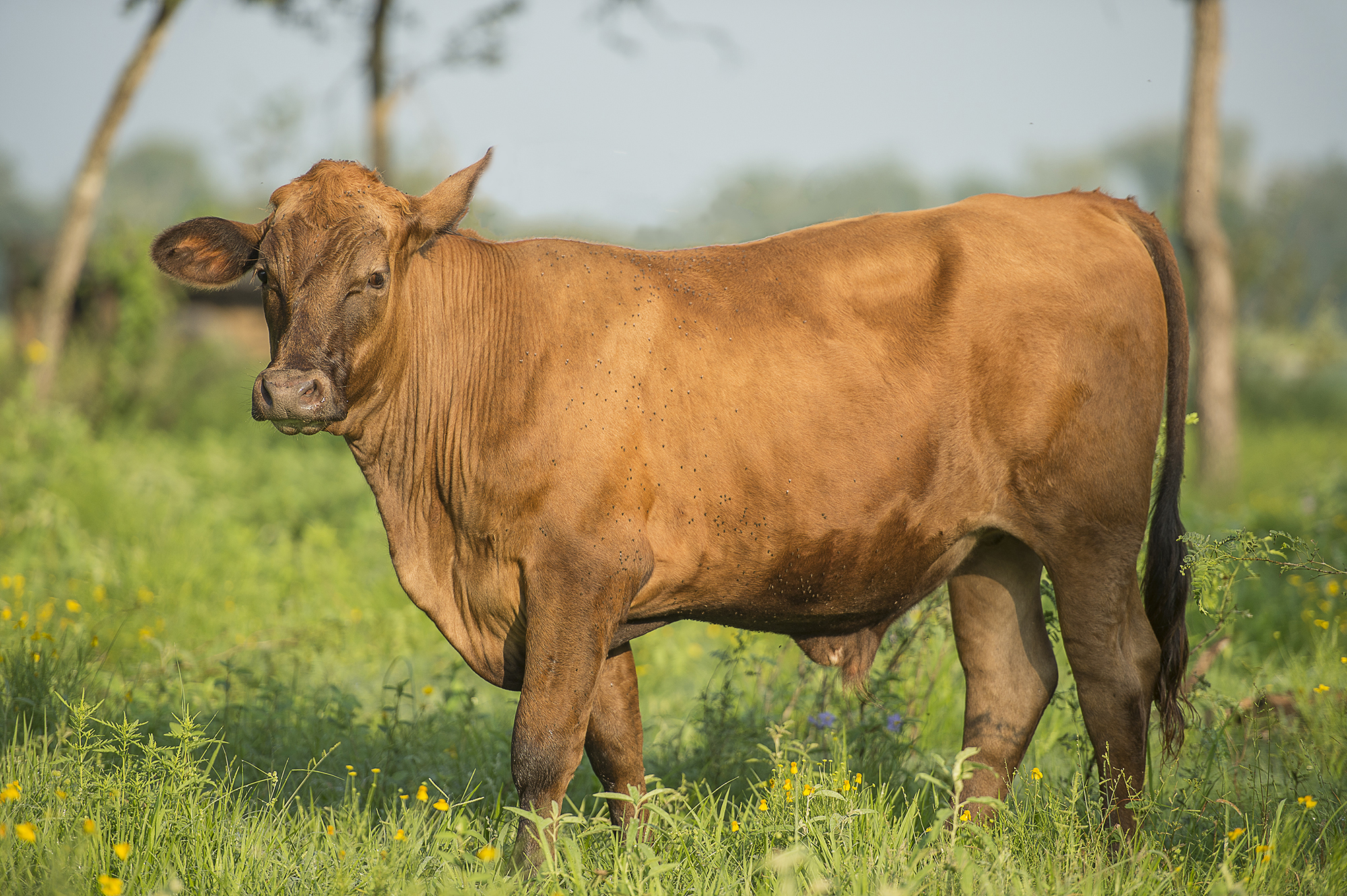100% Grass Fed and Grass Finished Texas Beef
Call (512) 785-4800
On The Hoof
BUYING A LIVE ANIMAL

Buying grass fed beef on the hoof, a full, side, or quarter can be the most economical way of getting this meat but the process creates a lot of questions. Many people are moving away from "mass produced beef" to what is believed to be the healthier choice of grass fed beef and they are looking for the best price point for this product. Those interested in purchasing a side of grass fed beef or a whole animal find that it can be very confusing the first time.
The cost to a family to purchase a whole live animal can be quite a cash outlay even though it is cost effective in the long run. A family has to consider how much beef they consume in a year at grocery store prices and then calculate how much freezer space they need to hold a whole animal. Once you've arrived at this figure, then the family needs to shop around for a producer of grass fed beef, usually found in their local area, a processing facility, how to get the animal to the facility, and how to decide what type of cuts of meat they want.
There are two types of processing facilities. If you own the animal, you have the right to have it processed wherever you like. If you buy meat already processed, it must have been processed at a USDA inspected facility to be available for resale to the public.
Because of the large initial expense or the large volume of meat to be consumed in a year, many small ranches will sell their cattle as shares or percentage (%) of the live animal. This is customarily done as halves or quarters and necessitates several families to go in together or for the producer to find buyers for portions of a live animal. Since share purchasing is based on a live animal, the share price will be based on the actual weight of the animal (either on the hoof or hanging weight).
This brings up questions about the cost of the live animal in relation to the weight of the beef during all the stages of processing. Depending on the rancher where you purchase your beef, the price of the beef will be based on the live weight of the animal, or the weight of the meat from one of the following stages of processing:
DRY AGED BEEF
When beef is dry aged it enhances the tenderness and flavor of the meat. The number of days to hang before the meat is cut is usually 10 - 14 days. Longer is always better but of course there is a limit depending on the environmental conditions in the cooler, discuss this with your butcher.
HOOF WEIGHT (LIVE WEIGHT)
The weight of the animal before processing. This is the least commonly used method since most ranchers do not have scales. (Note: Schaefer Ranch does have calibrated scales). This weight measurement may also calculate "Draw" or "Shrink" which is the amount of weight the animal looses through bodily elimination from when they are stressed during the handling and transportation to the processing facility.

HANGING WEIGHT (ON THE RAIL WEIGHT)
This refers to the weight of the animal as it hangs in the butcher's cooler. This is the weight once the head, hide, feet, organs and blood are removed. Almost all butchers base the processing fees on the amount of hanging weight. It is the price the butcher gets to cut, wrap and freeze the meat for the consumer.

DRESS PERCENTAGE
This is another term used in the process from a live animal to hanging weight. It refers to the hanging weight of the carcass as a percentage of the live weight. Dress percentages range from 50% to 66% of the live weight. This number varies based on the breed and class of cattle. For example, perhaps an Angus will have a thinner, lighter hide than another breed, or an animal with large horns may weigh more than polled (hornless) cattle. You will most likely wind up with a dress percentage around 60%.

PACKAGED WEIGHT (CUT & WRAP YIELD)
A carcass can vary greatly but a good average for this yield is 76% and refers to the cut, packaging and labeling of meat that you will put in your freezer. When the carcass is processed into the named cuts of meat, there is some loss where these cuts are deboned and fat is trimmed away. This yield will also depend on the types of cuts you tell your butcher that you want. Grass fed beef will usually have a higher percentage yield a higher percentage yield than grain fed beef since there is excess fat in grain fed beef that has to be trimmed away.
LIVE WEIGHT X DRESS PERCENTAGE WEIGHT X CARCASS YIELD = CUT & WRAP YIELD
1000 LB STEER X 60% X 76% = 456 LBS OF CUT & WRAPPED MEAT
- You will need about three cubic feet of freezer space for every 100 lbs. of meat.
- Chest freezers will minimize the amount of cold air let out when you open the lid. It's best to use one with no defrost cycle. The thaw and freeze cycles of a frost-free freezer will cause freezer burn of the meat.
Storage Considerations
TALK WITH YOUR BUTCHER
There are various areas from each section of the beef that have overlapping cuts so you must choose one or the other. The butcher will need your name, phone number, rancher’s name and size of the share you have purchased. Be sure to ask about hanging weight and processing fees. Indicate your family size and talk about how many cuts per package, tenderizing and your preferences from each primal section. You are probably buying enough beef for your family for a year and it can be a sizable expense so you want it done to your satisfaction.
- Size of your share for a half or quarter.
- Number of steaks per package.
- Thickness of steaks.
- Size / thickness of roasts.
- Weight of ground beef packages.
- Organ meat (heart, liver, toung).
- Tenderizing.
- Number of days to hang.
- Special cuts (tomahawk ribeye, flat-iron steak, etc.).
- Wrap and package: butcher paper or vacuum sealed.
Main Things To Consider
WHAT WILL THE MEAT COST TO PROCESS?
When you buy a head of cattle from us, we can give you the weight of the animal selected. We can also give you an estimate of what the hanging weight will be. If you are buying a share of an animal, your cost to us will be a percentage of the live weight when it is loaded on the trailer at the ranch. Once your share is processed, you will pick up your meat at the butcher's facility and pay the butcher for the cut & wrap fee. This cut and wrap fee will also include fees based on your percentage of the animal such as the kill fee and sometimes a bone disposal fee, and also fees for additional hanging time, grinding for hamburger, or patties and products like summer sausage.
When you talk to your butcher about the cuts of meat and thickness of each, be sure to ask what are all of their fees. Most processing facilities will have a price sheet available. Currently, kill fees are $55 - $65 and hamburger is around $.25/lb. for the trimming and grinding, and more if you have it made into patties. There are also fees for tenderizing, which is not usually necessary for properly aged grass fed beef.
948 Sandy Creek Road
Dale, TX 78616
Mobile: 512-785-4800